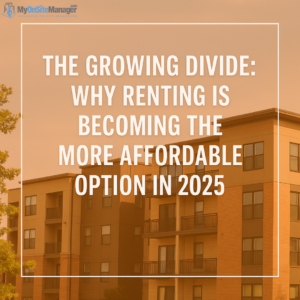For decades, homeownership has been considered the cornerstone of the American dream. But in today’s housing landscape, that dream is becoming increasingly out of reach for many. A recent analysis by RealPage reveals a striking truth: renting is now significantly more affordable than owning a home, and the divide is growing wider each year.
Mortgage vs. Rent: A 91% Cost Gap
As of 2024, the average monthly mortgage payment for a newly purchased home has ballooned to $3,525—a staggering 91% higher than the average rent of $1,850. Compare that to 2010, when owning cost just 18% more than renting, and you begin to see the sharp shift in housing economics.
This isn’t a minor fluctuation. It’s a historic divergence that reflects deeper market dynamics—especially the rise in interest rates, stagnant housing inventory, and surging home prices.
Homeownership Affordability Is Eroding
While inflation and rising interest rates get a lot of attention, the core issue is simple: income growth hasn’t kept up with housing costs.
According to RealPage data:
-
In 2019, the median home price was 4.7 times the median household income.
-
By 2022, that figure jumped to 5.8.
-
In 2023, it slightly eased to 5.3—but it’s still 13.6% higher than pre-pandemic levels.
Despite small improvements, these numbers confirm that housing affordability is still far worse than before COVID-19. For would-be homebuyers, the dream of purchasing a home is not just delayed—it’s drifting further away.
Renting Offers Relative Stability
In contrast, renters have seen some relief. While rental prices surged during the pandemic, the market has since stabilized:
-
Rent-to-income ratio peaked at 23.8% in 2021.
-
By the end of 2024, it declined to 22.5%.
-
That’s nearly on par with pre-pandemic levels (22.2% in 2019).
Thanks to slowing inflation, wage increases, and a cooling rental market, renters are now spending a smaller share of their income on housing than they were just a few years ago.
Why This Gap Keeps Growing
Several interlocking factors are contributing to the rent-ownership affordability gap:
1. Rising Interest Rates
The Federal Reserve’s response to inflation has pushed interest rates to their highest levels in over two decades. Even buyers with strong credit are facing mortgage rates of 6.5% or more, driving monthly payments far above what many can afford.
2. Limited Home Supply
Despite headlines about new construction, the U.S. is still facing a housing shortage. The supply of for-sale homes has not kept up with demand—especially in major metros—keeping prices elevated even as buyer activity slows.
3. Boom in Apartment Construction
On the flip side, the rental market has seen a construction boom. Millions of new apartment units have entered the market since 2021, increasing availability and helping to temper rent growth. In some cities, rents have even started to decline.
What This Means for Renters and Investors
This growing affordability divide has several key implications:
-
For Renters: Renting is no longer a temporary stepping stone for many—it’s becoming a long-term housing solution. With more predictability and fewer upfront costs, it’s the more feasible option for many households.
-
For Property Managers and Landlords: The strong demand for rentals offers a sustained opportunity. With affordability favoring renters, well-managed properties will continue to attract stable, long-term tenants.
-
For Policy Makers: These trends highlight the urgent need for solutions that address both rental supply and housing affordability, especially in markets where owning is entirely out of reach.
Final Thoughts
The perception of renting as “throwing money away” is quickly becoming outdated. As mortgage costs soar and wages struggle to catch up, renting offers the flexibility, stability, and affordability that millions of Americans need.
In 2025, the reality is clear: the cost of owning a home has far outpaced renting—and the smart choice for many is to rent, not buy.
Read the full analysis from RealPage here: https://www.realpage.com/analytics/mortgage-rent-divide/

